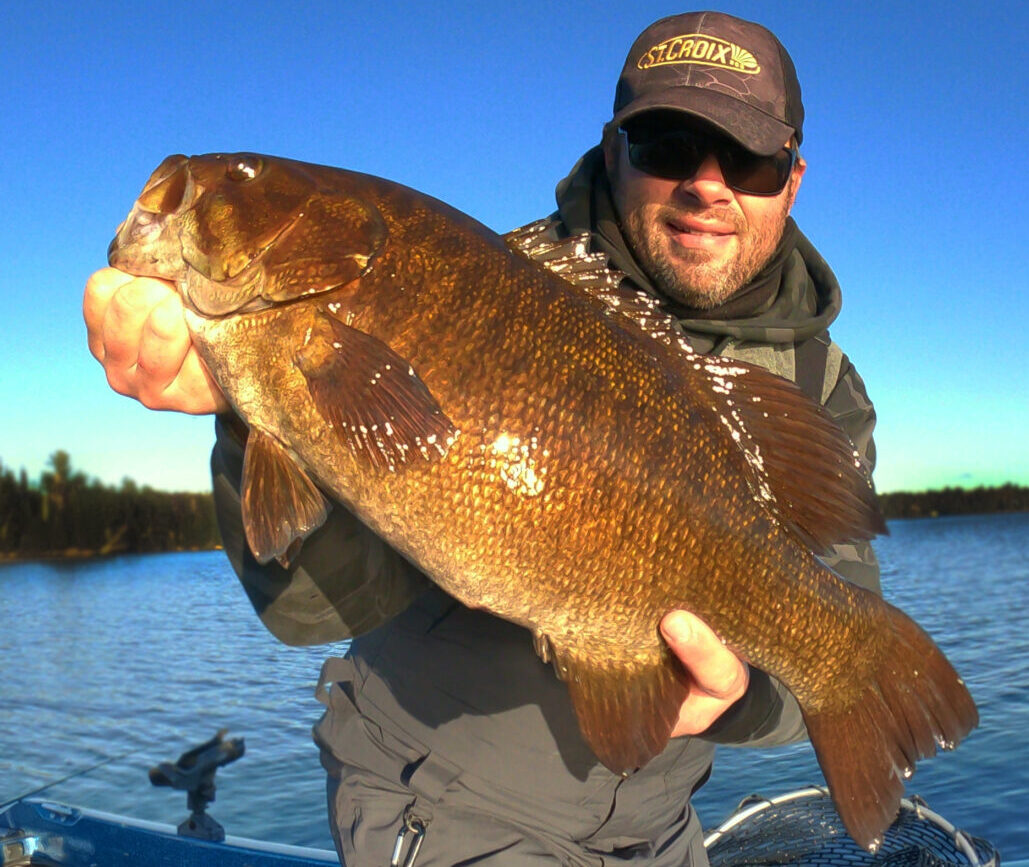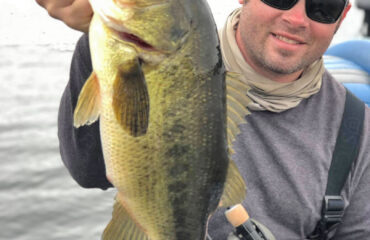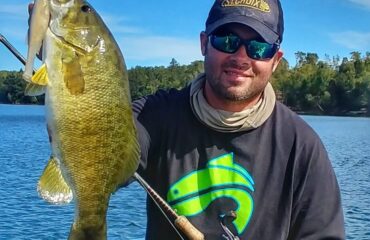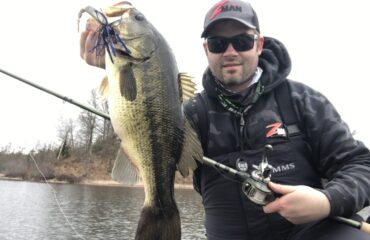Multi-Tasking Fall Smallmouths
Winter is looming. Smallmouth bass know it and also prepare for it. By early October, water temperatures have fallen below 60 throughout much of their northern range, and fall turnover is in the process of completion. Shorter daylight in conjunction with plummeting water temps and completion of turnover will influence smallmouths to congregate heavily in association to their fall staging sites and wintering areas.
As the days get shorter and colder, smallmouths migrate to the deep where they’ll situate and hold along deep topography in search of food. Wintering holes may be centered on a series of deep rock humps, rock and gravel to mud transitions, hard bottom rims around deep holes, the deepest edges of main lake points, steep shorelines and ledges, and the basins formed by deep secondary breaks. The substrates may consist of deep rock and gravel, bottom transitions, holes, sand grass, and all are commonly in 25 to 30 ft. depths. Wintering areas on some lakes may be in deeper water, greater than 50 ft. Wintering depths all depend on the lake’s maximum depth and how comfortable its bass fishery is in utilizing it.
Cold fronts, snow showers, and northwest wi



















